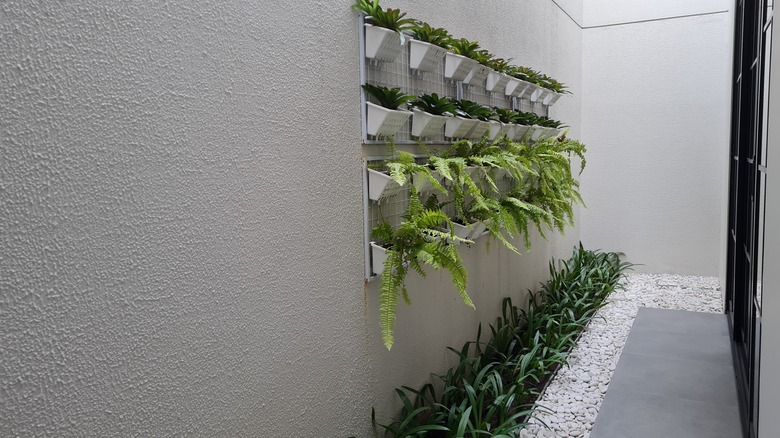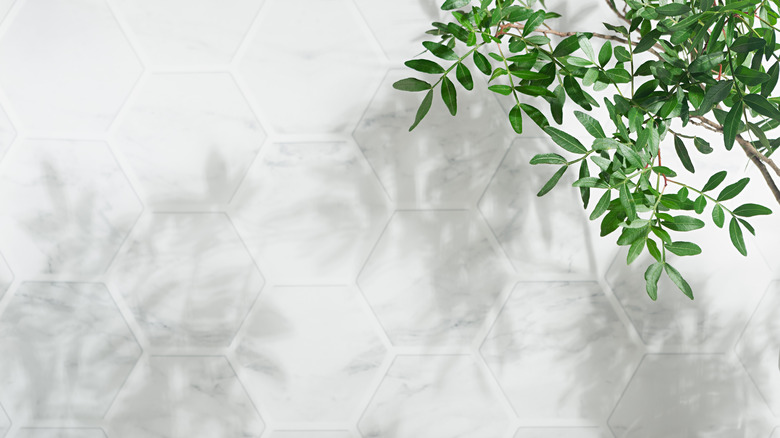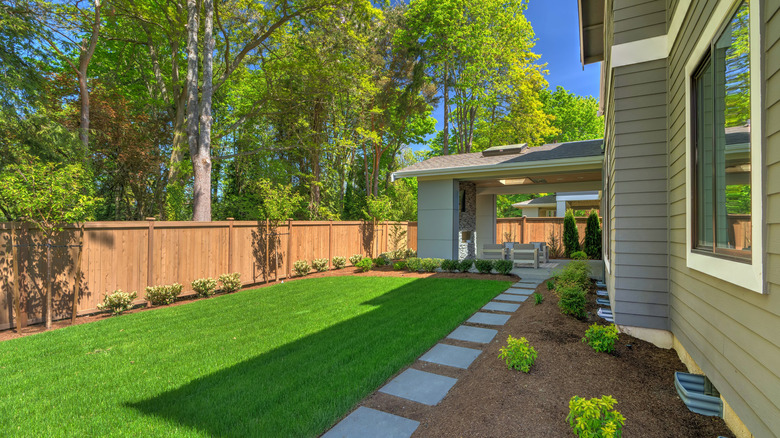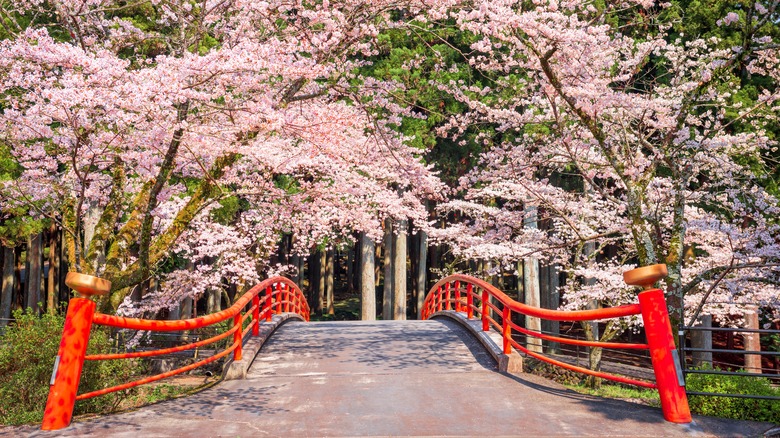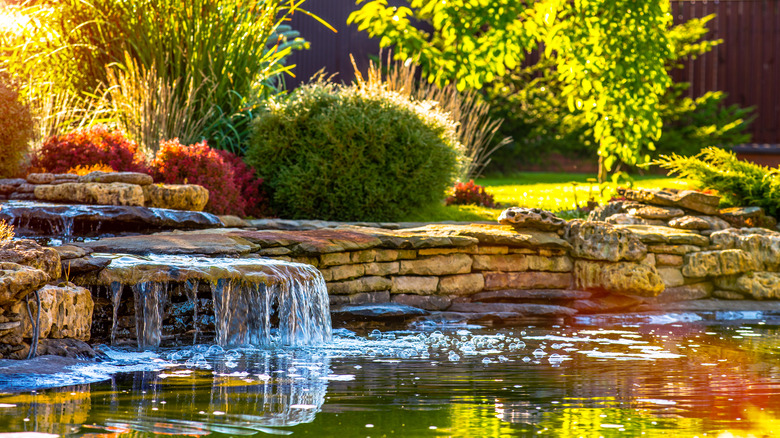5 Tips For Landscaping Your Long And Narrow Garden
Homeowners who enjoy (and sometimes rue the existence of) their long, narrow garden space know that these features can be immensely stylish and inviting, yet often hard to decorate. A long and narrow garden space provides many opportunities for customization and personal touches, but this type of yard certainly brings along many challenges and limitations that homeowners must overcome while working to make the space beautiful and relaxing as well. Landscaping is something that homeowners in the United States spend a considerable amount of money on every year. HomeGuide reports that the average U.S. homeowner spends more than $1,000 on professional landscaping services annually, with a monthly cost of roughly $100 to $200.
Placing importance on exterior spaces has always been a typical feature of American homeownership, but in urban environments that might incorporate less yard space than in suburban or rural neighborhoods, the prevalence of narrow or small garden areas can make this a difficult part of the home to elevate stylistically. With these five key tips for landscaping a condensed yard area, making the most of your long and narrow garden can be made easier and much more effective.
Incorporate elevation along wall sections
A narrow garden space often finds itself closed in by one or more walls of the home, as well as a fencing addition. These spaces can feel constricted when bare. But the addition of climbing vine plants and other plant options that can be elevated off the ground (up along the wall with hanging baskets and other features) can really transform the look and feel of the area. The English Garden notes that both plants and decorative features can be leveraged to create this much-needed physical height.
Incorporating elevation can also be done with the use of tall plants. Adding small trees along the perimeter of your garden space can be another option if you don't like the aesthetic of vine plants. Bringing height to the garden can give this space a sense of grandness and luxury that may not be possible with only ground cover plants while helping make the space feel more inviting and comfortable for anyone stepping into this area of your property.
Create segmentation by instilling separate, themed areas
In addition to height, segmentation can be used to delineate distinct spaces in a backyard, or any area of your home for that matter. A common option that homeowners make use of in the backyard space is the separation between the lawn area and a decking space that can be used for gatherings or general relaxation. In a small and narrow yard area, you'll need to make use of intelligent segmentation processes to get the most out of your efforts. A small decking area that incorporates a few chairs and a table can be a perfect addition to this part of the home. Similarly, in order to effectively create separation between your lawn and planting space and a sitting area, you'll want to utilize delicate railings that really offer themselves up as a buffer between the two areas of your garden. Trex also recommends opting for a material that both looks great and requires low maintenance to keep in this state.
Alternatively, you might consider building a pergola in one section of the yard and leaving another component of this space uncovered. Regardless of how you create your separate spaces, utilizing distinctive features and thematic stylization can go a long way to making this space feel more open, larger, and immensely comfortable.
Make use of serene walkways and raised garden beds
The combination of raised garden beds and paver or pebble walkways can be used to great effect. These elements produce a lengthening effect visually and make the space feel like an intimately planned out and immaculately executed garden area. This type of installation can be used to create a Japanese-inspired garden and with the right mix of tree options, vegetables, and other plants throughout the space, you can establish a luscious and inviting area that's perfect for morning coffee in the fresh air or an intimate evening with loved ones under the night sky.
Buckinghamshire Landscape Gardeners note that a Japanese garden imposes a natural hierarchy on a created landscape that takes its inspiration from the untouched world. Mixing water features, pathways, and elevation together can successfully produce a wonderfully peaceful yard area that promotes well-being and a sense of calm movement through the space. One striking feature of this kind of landscaping is the inherent quality of mobility; people want to walk slowly through these spaces, according to Perfect Plants (perhaps stopping to sit in a particularly calming area), and take in all that it has to offer. Introducing a pebble, gravel, or stone walkway alongside slightly elevated features can infuse this sense of peaceful and graceful movement and build a naturally soothing environment that will always provide you and your family with a quality outdoor experience.
Use water features for a calming addition
In the same way that a Japanese garden layout can produce a powerful calming effect, water elements can add this serenity too. Buckinghamshire Landscape Gardeners note that water features are a prominent element incorporated in Japanese-style gardens. This comes as a result of their natural prevalence in untouched forest areas.
The visual aesthetic of a water feature is often unmatched when introduced correctly. Water elements look fantastic, and they can really elevate the luxuriousness of any garden space. However, there is another benefit that a fountain or some other type of water feature can provide. In the more urban areas where these narrow gardens are often found, a water feature can be used to defeat the routine presence of disruptive noise that descends over many cities around the country and the world. Because these features are often found in busy urban areas, traffic, commuters, and even planes overhead can all contribute to a low-grade chaos that maintains a steady presence in your life at home.
The soft noises created by a babbling water feature can act as a stabilizing factor in this serenity and peacefulness that you are hoping to create in your outdoor space. Many people find rain sounds, ocean noises, and many other natural sonic effects to be immensely soothing (via Main Line Today), and this type of addition can provide that in your small yard area.
Consider stylized garden furniture, including exterior mirrors
Garden furniture is the final piece of the puzzle when it comes to pulling together the perfect outdoor space. Your furniture can make or break the space, and when considering the spatial needs of a slender yard, these additions are particularly important. Many homeowners utilize wooden deck furniture, but for a slim garden area, you might consider an iron bench that mirrors the aesthetic of the urban parks that likely surround your property.
Similarly, the use of mirrors in the outdoor space can create a massively impactful change to the aesthetic of the feature. Successful Garden Design reports that mirrors are particularly helpful for homeowners who have small gardens, but they must be used in coordination with true decorative features to complete the illusion that a mirror naturally creates.
Mirrors make spaces look bigger and more complex. But if the mirror is placed on its own in a corner or isn't complemented well by the inclusion of plants and other additions to round out the look and feel of the space, it can fall flat in its purpose of elevating the lawn. A mirror on its own is simply that: A mirror. But when paired with high-quality furniture and a depth of plant life, it can transform the way your garden feels.

